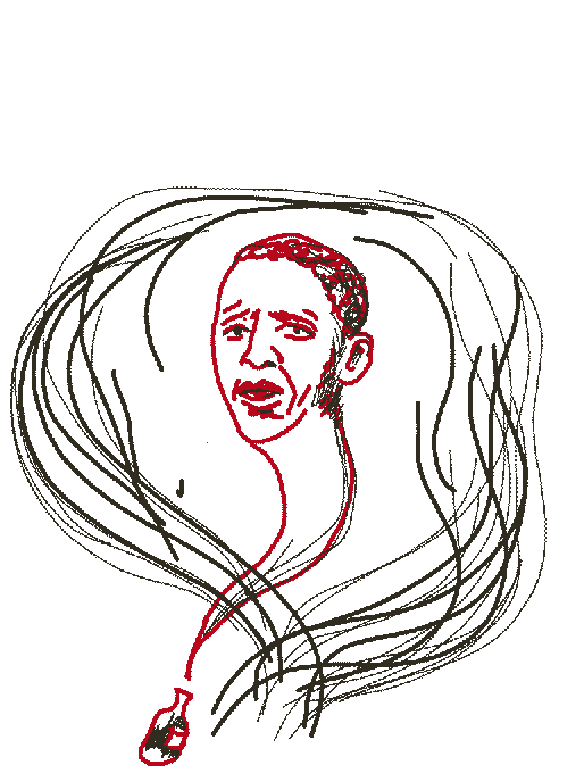Editor’s Note: Nicole Hemmer is an associate research scholar at Columbia University with the Obama Presidency Oral History Project and the author of “Messengers of the Right: Conservative Media and the Transformation of American Politics.” She co-hosts the history podcast “Past Present” and “This Day in Esoteric Political History.” The views expressed in this commentary are solely those of the author. View more opinion articles on CNN.
The Capitol insurrection brought renewed attention to the dangers of disinformation and conspiratorial politics and has sparked new efforts to curb the reach of such conspiracies. While that happened quickly with former President Donald Trump, who has been deplatformed and impeached, addressing the more entrenched problem of the right-wing media landscape has proven more difficult.

Enter the Fairness Doctrine, a regulation in place from the late 1940s until 1987 that dictated balanced coverage of controversial issues on broadcast radio and television. After its repeal, Rush Limbaugh’s radio show and Fox News quickly emerged to become two of the most influential political institutions in the US, the cornerstone of a right-wing media ecosystem of radio shows, cable networks and online platforms that would flourish in the coming decades.
A popular argument, commonly made when frustrations with right-wing media peak, and back in vogue after the insurrection, goes something like this: reinstate the Fairness Doctrine and you eliminate the scourge of right-wing media. It’s an inviting idea. No wonder everyone from New York City mayoral candidate Andrew Yang to Washington Post columnist Max Boot have landed on it in recent weeks.
The problem with this idea is that the Fairness Doctrine emerged in a time when the central concern was the scarcity of platforms; now, misinformation and disinformation flourish in an environment of abundance. Why try to retrofit an old regulation on a new media environment, unless you’ve imbued that regulation with magical properties, a belief that it is a fix-all for a set of deeply embedded, systemic problems?
Policy panaceas for widespread social and political problems should always be met with skepticism. But this one deserves to be rejected out of hand.
The poorly understood history of the Fairness Doctrine shows not only that reinstating it won’t fix current political media crises, but also that it won’t be the check on conservative media’s worst offenses that so many want it to be.
The Federal Communications Commission, which had wrangled with the problem of radio propaganda for more than a decade, finally settled on the Fairness Doctrine in 1949. It replaced the controversial Mayflower Doctrine, established in 1941, which barred broadcasters from editorializing on radio for fear that station owners would use their broadcast licenses to pump out propaganda. “In brief,” the regulation read, “the broadcaster cannot be an advocate.”
The FCC could dictate to stations because the government issued their broadcast licenses. There was only so much bandwidth, so not everyone who wanted to broadcast could.
Wartime restrictions became increasingly untenable by the late 1940s and the Fairness Doctrine was drawn up to give broadcasters more room to editorialize – with the understanding that they do so in a balanced way. The regulation required stations both to cover controversial issues and to present them fairly. If a station, for instance, ran commentary in support of lowering property taxes, then it would have to give airtime to someone who opposed doing so.
By the late 1950s and 1960s, right-wing broadcasters, who had already become a central part of the burgeoning conservative movement, had cast the Fairness Doctrine as a tool of government censorship.
And it caused them real problems: though the regulation was mostly toothless (the FCC didn’t have good enforcement mechanisms), station owners were often reluctant to carry conservative shows, which by their very nature were one-sided, refusing to include liberal voices. “Every speaker over our network has been 100 percent Right Wing,” conservative host Clarence Manion told his audience in 1956. “You may rest assured, no Left Winger, no International Socialist, no One-Worlder, no Communist will ever be heard.”
As president and an opponent of government regulation, Ronald Reagan, whose path to the White House ran through radio – he did daily on-air commentary for four years after he left the governor’s office in California – had the Fairness Doctrine in his sights. He appointed an FCC commissioner who was equally hostile to the regulation and by 1987, the doctrine had been revoked.
The next year, Rush Limbaugh’s show went from a local broadcast to nationwide syndication, transforming both political media and the conservative movement.
That, anyway, is how the story of the Fairness Doctrine is typically told.
But what’s missing is what happened in the 1970s, when a number of conservatives started using it to expand their reach on radio and television. Groups like Accuracy in Media, a right-wing media watchdog organization, saw an opportunity in the regulation, a way to challenge what they saw as the lopsided liberal programming that dominated the airwaves. The organization even worked with the Nixon administration to file Fairness Doctrine claims against PBS when the administration was trying to scale back public broadcasting. (Nixon liked this idea because, as one aide put it, it provided “a mechanism under which private nongovernmental pressures can be brought to bear on the three networks.”)
By the 1980s, as Reagan’s FCC was working to uproot the Fairness Doctrine, other conservatives were growing more attached to it. A coalition of conservative supporters, including longtime activist Phyllis Schlafly and then-White House communications director (later far-right presidential candidate) Pat Buchanan, had formed around the Fairness Doctrine.
Worried that it would be repealed, a bipartisan group in Congress fought to retain it. The sponsors of a new Fairness Doctrine bill included right-wing leaders like Newt Gingrich and Trent Lott; the legislation passed overwhelmingly in both houses, only to be vetoed by Reagan.
It was not until Limbaugh’s show became wildly popular that conservatives in Congress changed their tune. The 1993 push to reinstate the Fairness Doctrine went very differently: dubbed the “Hush Rush” bill by Limbaugh and his supporters, the proposed law lost its bipartisan support.
That part of the story matters as well, because it’s a reminder that even if the Fairness Doctrine were renewed, it could just as easily be used to spread right-wing propaganda further: to argue, for instance, that someone challenging the 2020 presidential election results should appear on every newscast, or that climate change deniers receive airtime in every discussion of the climate crisis.
And if it’s hard to imagine that happening under Joe Biden’s FCC, well, just imagine how a Fairness Doctrine might have been enforced under former President Trump.
Get our free weekly newsletter
What America needs instead is a creative, comprehensive effort by both the private sector and the government to disincentivize conspiracies and misinformation on the many platforms on which they flourish. Some social media companies have begun this work, clearing out QAnon sites and banning some far-right and White power users and communities who pose a threat.
That work needs to continue, with careful attention to the biggest offenders who game algorithms and media structures to spread misinformation. But sources of misinformation also need to be demonetized, whether they are YouTube channels or national cable networks, and algorithms tweaked to slow down the spread of extreme content.
Such steps won’t entirely fix America’s misinformation problem, but they will go a long way to limiting it – and will do much more to keep Americans safe and informed than a new Fairness Doctrine ever could.







